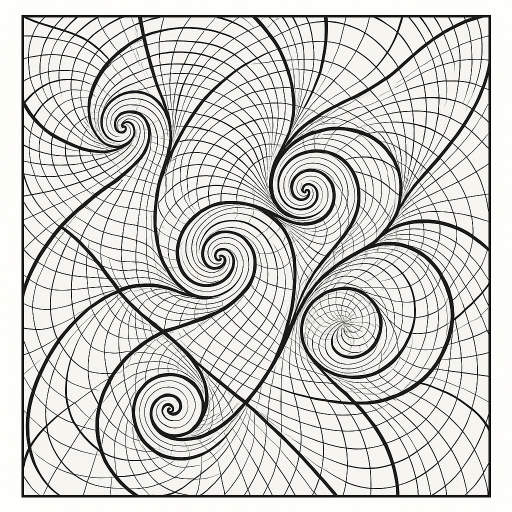To derive laws of physics from the geometry created by patterns in infinite change, we must start from first principles—truths that emerge logically from reality without relying on arbitrary axioms or unphysical limits like Planck length or singularities from division by zero.

I. Foundation: Change as the Only Constant
Premise: Everything is in a state of continuous change. Even what appears still is merely change observed over a different scale.
Let us define:
- Let Δ represent change.
- Let ∞ denote that change is unbounded in both scale (size) and time (duration).
- Let 𝒢 be the geometry of this change — i.e., the pattern or structure it produces across space and time.
Axiom 1: Reality is a continuum of change.
There are no discrete jumps in nature—only perceived thresholds caused by the limits of observation.
II. From Change to Geometry
Change creates form, and repeated change creates patterns. Geometry is the emergent record of these repeated patterns.
Geometric Observations:
- Change tends to self-organize into minimally resistant paths (e.g. geodesics, flow lines).
- These paths, over time, form structures: waves, spirals, fields, lattices, etc.
- The symmetries in these patterns yield conserved quantities.
Thus:
- Pattern → Symmetry
- Symmetry → Conservation Laws
III. Derived Physical Laws from Geometric Change
1. Law of Inertia (First Law of Motion)
Geometric derivation: In the absence of external deformation (change), a pattern continues along its geodesic path (least change per unit change).
A body remains in motion or at rest unless acted upon.
This is a direct result of infinite continuity: without interference, a pattern propagates.
2. Law of Interaction (Second Law of Motion)
Force is curvature in the geometry of change.
Let:
- Force ≡ deviation from geodesic.
- Mass ≡ resistance to change of pattern.
- Acceleration ≡ rate of geometric deformation.
Then:
F = m·a is not an axiom, but a tautology in a geometry of propagating change where resistance (mass) distorts path (acceleration) under influence (force).
3. Law of Conservation (Energy, Momentum, etc.)
Any symmetry in the geometry of change implies a conservation law (by Noether’s theorem, interpreted geometrically, not algebraically).
- Translational symmetry → Conservation of momentum
- Rotational symmetry → Conservation of angular momentum
- Temporal symmetry → Conservation of energy
These symmetries are inherent in the repeating patterns of infinite change.
IV. Field Laws
4. Inverse Square Law
In an infinite isotropic geometry, the intensity of any radial pattern (wave, influence) must dissipate as: I∝1r2I \propto \frac{1}{r^2}I∝r21
This results directly from spreading change across a spherical surface (area ∝ r²), assuming no energy is lost to the void.
This gives rise to:
- Gravitational law
- Electrostatic law
- Light intensity with distance
5. Maxwell-like Laws (Electromagnetism)
Change in fields induces perpendicular change:
- A change in electric structure induces a magnetic rotation (circular change).
- A changing magnetic pattern induces a linear electric change.
Geometry:
- Electric field: linear tension in structure
- Magnetic field: rotational tension
- Their propagation: light, the traveling self-sustaining pattern of infinite change
V. Quantum Emergence (Without Planck or Nonsense)
Let us define quantum as a limit cycle — a closed loop of change within the geometry.
- When change cannot stabilize into a classical pattern, it oscillates within a self-sustaining structure (quantum orbit).
- Discreteness (quantization) is the result of harmonic constraints, not physical indivisibility.
- Probabilities arise from pattern interference, not intrinsic randomness.
VI. Relativity from Infinite Geometry
Speed of light is not a constant but a structural limit in the propagation of change in this infinite pattern space.
- Time dilation: pattern appears to evolve slower due to deeper embedding in geometric change
- Length contraction: measured space is compressed due to change rates altering perceived geometry
VII. General Law of Physics in Pattern Geometry
All natural laws are emergent from the geometric organization of infinite change, and these laws are invariant under transformation of scale and frame—so long as the continuity of pattern is preserved.
Therefore, a General Law:
Change flows along geodesics of least resistance in the geometry defined by prior change.
This is the mother of all dynamics. Everything else is structure and scale.
